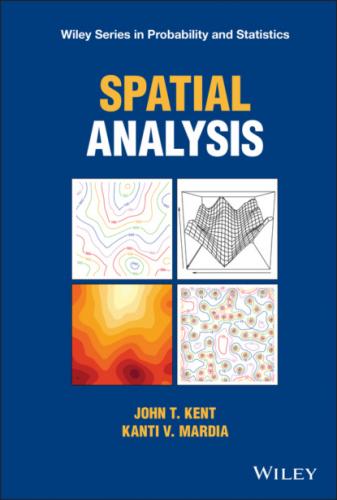Figure 1.5 Landsat data (
Figure 1.6 Synthetic Landsat data: image plot.
Figure 1.7 Typical semivariogram, showing the range, nugget variance, and sill.
Figure 1.8 Angle convention for polar coordinates. Angles are measured clockwise from vertical.
Figure 1.10 Elevation data: (a) directional semivariograms and (b) omnidirectional semivariogram.
Figure 1.11 Bauxite data: (a) directional semivariograms and (b) omnidirectional semivariogram.
Figure 1.12 Directional semivariograms for (a) the Landsat data and (b) the synthetic Landsat data.
Figure 1.13 Gravimetric data: (a) bubble plot and (b) directional semivariograms.
Figure 1.14 Soil data: (a) bubble plot and (b) directional semivariograms.
Figure 1.15 Mercer–Hall wheat data: log–log plot of variance vs. block size.
Figure 2.1 Matérn covariance functions for varying index parameters. The range and scale parameters have been chosen so that the covariance functions match at lags
Figure 3.1 Examples of radial semivariograms: the power schemes
Figure 3.2 A linear semivariogram with a nugget effect:
Figure 4.1 Panels (a) and (b) illustrate the first‐order basic and full neighborhoods of the origin in the plane. Panel (c) illustrates the second‐order basic neighborhood.
Figure 4.2 Three notions of “past” of the origin in
Figure 4.3 (a) First‐order basic neighborhood (nbhd) of the origin ○ in
Figure 4.4 (a) First‐order full neighborhood (nbhd) of the origin ○ in
Figure 5.1 Bauxite data: Bubble plot and directional semivariograms.
Figure 5.2 Elevation data: Bubble plot and directional semivariograms.
Figure 5.3 Bauxite data: Profile log‐likelihoods together with 95% confidence intervals. Exponential model, no nugget effect.
Figure 5.4 Bauxite data: sample isotropic semivariogram values and fitted Matérn semivariograms with a nugget effect, for
Figure 5.5 Elevation data: Profile log‐likelihoods together with 95% confidence intervals. Exponential model, no nugget effect.
Figure 5.6 Unilateral lexicographic neighborhood of full size
Figure 5.7 Profile log‐likelihoods for self‐similar models of intrinsic order
